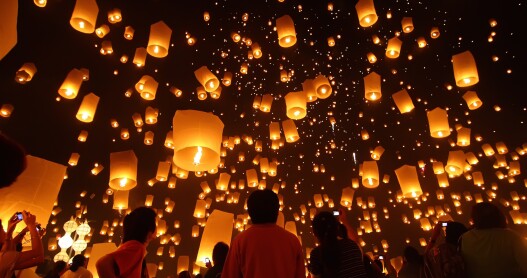Overview
When’s the best time to go to Taiwan?
The period from October to December is the most temperate time of year in Taiwan. Rain is rare, the climate is pleasant, and the locals are lively because the blistering summer heat has subsided. The weather is excellent for dining on patios, hiking in Taroko Gorge, and hanging out on the beach. Bear in mind, however, that the island may be much less crowded if you avoid from the peak tourist season.
How to get around Taiwan
Taiwan is very easy to navigate. High-speed rail and train lines connect all the major cities, but the expats who live there will tell you the best way to travel is the HoHsin luxury bus. The bus is only slightly more expensive than the train and much cheaper than high-speed rail—and passengers ride in luxury with electronic massage recliner seats and personal video screens. Taipei and Kaohsiung both offer state-of-the art rail transportation, and taxis are abundant and cheap throughout the island. For the most freedom (and adventure), do as the locals do: drive a scooter. Bring your international driver’s license, and make sure to rent a good helmet.
Food and drink to try in Taiwan
Taiwan has a myriad of food specialties. Every city and region features a unique delicacy that must be tried, and most restaurants are known for their own specialty dish. Night markets are exceptional grazing grounds for street food like squid on a stick, sweet sausage, and the infamous stinky tofu. A large Buddhist population means that vegetarian restaurants abound, often marked with a swastika. The Taiwanese make fake meat that will tempt even the most devout carnivore. The ethnic diversity means that in addition to some of the most exceptional Chinese cuisine on earth, one can find authentic and inexpensive Indian, Thai, Vietnamese, Malaysian, and Filipino restaurants here. Bubble tea, the most popular beverage export, is available at tea shops on nearly every street corner and should be drunk as frequently as possible.
Culture in Taiwan
Most Taiwanese are of Chinese descent, but the cultural identity of this island is subtly distinct from that of the mainland. In the south of the island, many people speak Taiwanese, a linguistic offshoot of Hokkien. Taiwan is also home to more than a dozen recognized groups of aboriginal people, each with its own language. Taiwan’s indigenous heritage is rich and varied, especially in rural areas. Taiwanese culture also retains a strong Japanese influence: Japan ruled the island for many decades, and the Japanese developed much of the local infrastructure and housing. Quite a few older Taiwanese are fluent in Japanese, and many cultural remnants—such as hot spring practices—remain to this day.
The spirituality of most Taiwanese is a blend of Taoism, Confucianism, and Buddhism mixed with a strong dose of local folklore and a healthy belief in ghosts. This colorful milieu has forged a slew of unique ideas and festivals. The best-known commemorations include the Dragon Boat Festival (late spring), Chinese New Year (usually in January or February), and the Lantern Festival (at the end of Chinese New Year). Two fascinating lesser-known gems are the Yenshuei Fireworks Festival (also around Chinese New Year)—in which thousands of fireworks are shot directly into the surrounding crowds—and the Boat Burning Festival (every three years in mid-autumn), when a 15-ton ship is burned so that it can ferry ghosts to the afterlife. Traditional festivals are scheduled according to the Chinese calendar, so dates vary from year to year. There are also various rock festivals throughout the year. The largest, Spring Scream, takes place each April in the beach town of Kenting. Finally, Taiwan is home to the world’s largest group swim, held every September in Sun Moon Lake.
Local travel tips for Taiwan
Taiwan is an exceptionally safe place for travel, and the Taiwanese are among the most cordial, honest, and visitor-friendly people on earth. The lack of English speakers and signage can make travel challenging at times if you don’t speak an Asian language. However, the helpfulness and graciousness of the Taiwanese people more than compensate for any troubles caused by the language barrier. Familiar-looking 7-11 stores are a staple of Taiwanese society in which locals pay bills, ship packages, and even purchase underwear. They seem to appear on every corner, and you’ll sometimes even see two on opposite corners of an intersection! Fresh food is delivered daily to 7-11s, and the cappuccinos aren’t bad either. Whenever you are looking for a quick salad, coffee, beer, a pair of panty hose, or a toiletry that you’ve forgotten, you need look no farther than the nearest 7-11, which is most likely fewer than two blocks from wherever you happen to be standing.









